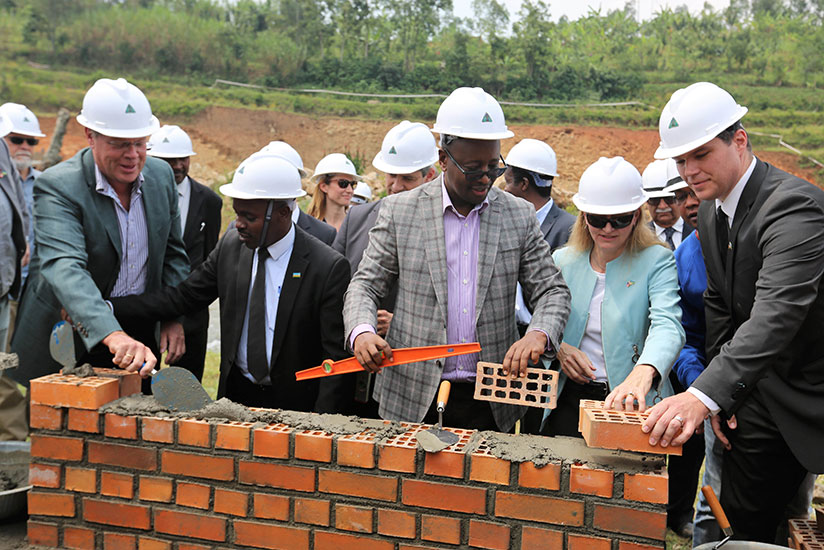Construction of new Musanze hydropower plant which was launched on Wednesday is expected to add at least 3.6 megawatts to the national grid. The plant is being constructed on Mukungwa River in Nkotsi Sector in two phases; Rwaza I to produce 2.6 megawatts, and Rwaza II, the second phase will start later along the same river to add one megawatt to the national grid, according to the officials.


Construction of new Musanze hydropower plant which was launched on Wednesday is expected to add at least 3.6 megawatts to the national grid.
The plant is being constructed on Mukungwa River in Nkotsi Sector in two phases; Rwaza I to produce 2.6 megawatts, and Rwaza II, the second phase will start later along the same river to add one megawatt to the national grid, according to the officials.
Both phases are expected to cost $17 million, according to project developers.
DC HydroPower (Rwanda) identified and developed the project through the feasibility stage and signing of the Power purchase Agreement (PPA) with the Rwanda Energy Group.
Frontier Energy company from Denmark and ResponsAbility Renewable Energy Holding (rAREH) joined DC HydroPower as investment partners during the final stages of development.
Speaking at the groundbreaking ceremony yesterday, Infrastructure minister James Musoni said the project demonstrates proper partnership between private sector and government to help the country achieve its target of providing energy to all Rwandans.
"This power plant might be small in size but we have no doubt that it will greatly contribute to our bold vision. This project could not have come at a more opportune time, as we project our energy demand to soar,” he said.
The plant is expected to be complete by July next year.
"As you may be aware, our country is developing fast and we want electricity to reach all people and industries,” he said.
Musanze residents will be the prime beneficiaries once the power is added to the grid, according to the minister.
The project is expected to light more than 100,000 households.
The project was supported by the Germany and US governments as part of Power Africa (US Government-led electricity access initiative) and KfW (Germany’s government-owned development bank).
Germany injected $6 million while the US was more involved in feasibility studies.
"American companies are at the forefront of helping Rwanda meet its energy needs and are driving investment in the mini-hydro sector,” said US Ambassador to Rwanda Erica Barks-Ruggles. "I am excited about the progress we have made over the past couple of years and the potential for further US investment and engagement through Power Africa initiative to help Rwanda meet its energy targets,” she added.
Chad Bannick, the chief executive of DC HydroPower, said: "As developers and investors in the energy sector, we are thankful to be part of Rwanda’s initiative to reduce greenhouse gasses and provide clean, renewable energy to the people of Rwanda,”
Locals upbeat
Residents from Musanze welcomed the project, saying it will help them get electricity and benefit from the river that has been around for many years without being very productive.
"We are excited and hope the project will help us get electricity for development. With electricity, our children will be able to do their homework which will help them perform better. Besides, we will be able to start income-generating businesses such as welding, saloons as well as other projects we can’t run without electricity,” said Vestine Hatumimana, a mother of four from Nkotsa Sector.
The construction of the hydropower plant directly supports the Government’s goal of providing 70 per cent of its population with access to electricity by 2018 from the current 34 per cent of coverage.
editorial@newtimes.co.rw


